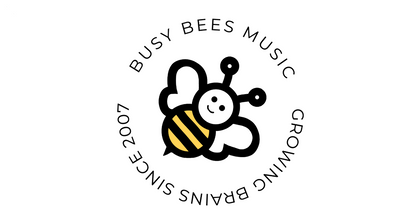
CLUB MARCONI, 121-133 PRAIRIE VALE ROAD, BOSSLEY PARK NSW 2176

Have you ever noticed your child acting differently in certain situations? Some children may show preferences for specific textures while others avoid them. Some might struggle to remain seated during activities, walk on their toes, seem overly sensitive to touch, or quite the opposite – need to touch everything. These kinds of behaviours can sometimes be linked to how their brain takes in and processes sensory information. Children's sensory processing abilities determine how they perceive their environment, which often explains these behaviours.
Occupational therapy functions as a healthcare specialty that enables individuals across different age groups to develop necessary life skills referred to as 'occupations'.
At Busy Bees, we see sensory and motor challenges as part of a bigger picture. That’s why we encourage families to consider some key foundational areas first — including primitive reflexes (those automatic movements babies are born with that shape brain-body connections), hearing (which is crucial for language and connection), and vision (important for coordination, focus, and learning).
When these foundations are well-supported or ruled out, occupational therapy and speech therapy become clear next steps to help your child thrive.
A peadiatric occupational therapist (commonly referred to as an OT) supports children in the ‘occupations’ of daily life. For young kids, this often means helping with:
how they might experience touch, movement, sound, sight, and body awareness (this is called sensory processing)
gross motor skills like running and jumping and/or fine motor skills like holding a pencil or using utensils (generally called motor skills)
helping kids stay calm, focused, and engaged (comes under regulation and attention)
dressing, feeding, hygiene (and all other kinds of self-care skills)
how kids explore and engage with their world and peers (play and social skills)
An occupational therapist (OT) helps families understand these sensory needs and supports children in developing better body control and the skills they need to manage everyday situations.
Every child is different, but here are some signs that could indicate sensory or motor challenges:
Being very sensitive or avoidant of touch, textures, sounds, or lights
Constantly seeking movement or touch in a way that seems excessive (e.g., always touching other kids, running around nonstop)
Walking on toes or having an unusual gait
Difficulty with coordination, balance, or fine motor tasks
Trouble focusing or drifting off during activities
Struggling to manage emotions or self-soothe
Difficulty in social play or interacting with peers
Even if your child is hitting language or cognitive milestones, sensory or motor issues can still impact their overall development and wellbeing.
Sometimes too, behaviours that seem sensory or motor-related might also be linked to communication challenges. If a child is having difficulty expressing themselves or understanding others, it can show up as frustration, withdrawal, or even sensory-seeking behaviours. That’s where a speech pathologist can help. They focus on how children understand and use language and can also advise if a hearing check might be helpful. Since since hearing plays a big role in speech and communication this can be an important piece of the puzzle too. If you're curious, here's a blog post that explains more about what speech therapy involves and how to know if it's worth looking into.
Music and movement naturally engage the sensory systems in a playful, structured way. Our Busy Bees classes encourage:
Body awareness and control through dancing and rhythmic movement
Sensory exploration with instruments, textures, and space
Regulation through predictable rhythms and calming melodies
Social skills through group activities and turn-taking
Motor planning with action songs and coordinated movements
These activities support brain-body connections that help kids regulate sensory input, build motor skills, and feel confident in their bodies and interactions.
While music and movement provide fantastic sensory-rich experiences, some children benefit from a targeted OT assessment and therapy. This provides families with a clear picture of their sensory profile and facilitates the use of individualized supports and strategies. Children who receive early intervention feel more at ease, successful, and focused at home and in group environments like Busy Bees.
If you think your child would benefit from a sensory or motor assessment, you can get in touch with an occupational therapist (OT) directly, as you don't need a referral to see one.
If you would like to access government subsidies or rebates or see an OT at a government run centre (like Rainbow Clinic in Liverpool), you will need a referral from your GP.
For connection-focused, family-friendly therapists who use play-based approaches, I highly recommend:
Milestones Kids Therapy Hub — located at Wetherill Park
https://www.milestones.au/
Move Play Grow — located in Gledswood Hills
https://www.moveplaygrowot.com.au/
Integrate Holistic Occupational Therapy — mobile therapist
https://www.integrateholistic.com.au/
Just for Kids Therapy — servicing Bankstown and Cabramatta and also online and mobile (languages spoken include Vietnamese and Korean) https://justforkidstherapy.com.au/
All have experience working with children in ways that align beautifully with how we work at Busy Bees, focusing on building connection and supporting children through engaging, hands-on activities.